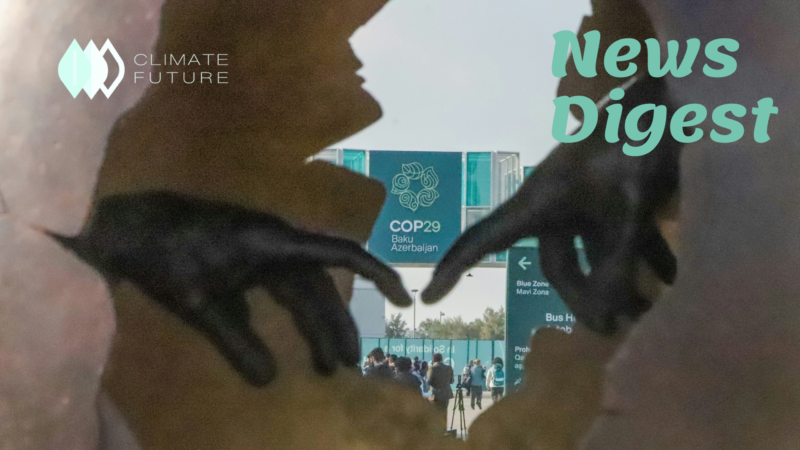COP26: Rich nations ‘resisting paying for climate loss’
It is important to change the negative tone of negotiations regarding the irreversible impacts of climate change since civil society leaders have told political leaders at COP26. Rich countries have been avoiding the damage and loss of climate-impacted countries. Climate leaders from the non-governmental sector have mentioned that climate finance, especially for damage and loss, is the major issue for developing countries which needs to be discussed at the climate summit. At the UN climate summit in Copenhagen twelve years ago, developed countries committed to finance $100 billion a year in climate change by 2020. But the pledge has not been fulfilled yet. The Scottish government has pledged US$ 1.36 million for the loss and damage by supporting a partnership with the US-based Climate Justice Resilience Fund to improve communities rebuild from climate-related events.
Relocating Pacific islanders ‘should be last resort’
According to the World Bank, the settlers from low-lying Pacific islands choose to adapt to climate change and sea-level rise rather than migrating to new countries. When there are unavoidable long-term serious impacts of sea-level rise and climate, the dwellers need to relocate, especially the ones from certain areas with high risk. At the UN climate summit COP26, future policy to solve the problems of small island states such as livelihood and lifestyle changes, landlessness and food insecurity are discussed. Relocation is required to be safely designed with meaningful consultation for affected communities, consisting indigenous people. The Paris Agreement comprehends the significance of protecting the rights of underserved and vulnerable sectors, including children, persons with disabilities and indigenous people while addressing climate change.
Over 57 million affected by climate disasters across Asia Pacific in 2021
In 2021, the Asia-Pacific region experienced unpredictable climate-related disasters which severely affected over 57 million people during the peak of the global pandemic. The International Federation of Red Cross (IFRC) has started 26 new operations this year and 15 of which are related to climate disaster responses. South Asia has been the worst hit this year from multiple disasters and millions of people were affected by that with little time to recover. According to the data from the Indian Government, Disaster Management Division, more than 18 million people have been seriously impacted by cyclones and floods this year. In Bangladesh, over half a million people have suffered from flood. Around a third of Nepal’s population faced landslides or floods with many suffering from the traditional monsoon season. Other countries across Asia have also encountered multiple disasters. Pacific island countries also suffered from significant flooding because of rising sea tides and storms.
Land and water ecosystems, ‘stressed to a critical point’
If the world’s current trajectory continues by producing the additional 50% more food needed, that could mean a rise of 35% in the water withdrawal needed for farming. That could lead to environmental disasters, resource scarcity and new social challenges and conflicts. At present, human-induced soil degradation impacts 34% which is around 1660 million hectares of agricultural land. Currently, water scarcity threatens 3.2 billion people depending on agricultural areas. The Food and Agriculture Organization believes that scaling-up technology and innovation is crucial to address the challenges. The digital systems are required to be improved and show basic data, information and science-based solutions for agriculture. Land and water governance must be managed to be more adaptive and inclusive so that millions of smallholder farmers can benefit. Integrated planning is needed at all levels with investments in agriculture towards social and environmental gains. Resources should be used sustainably to achieve climate adaptation and mitigation targets.
Plastics in soil threaten food security, health, and environment: FAO
According to the UN agriculture agency, plastic pollution has become a major issue in agricultural soils and poses a threat to people’s health, food security and the environment. The Food and Agriculture Organization (FAO) said that each year the agricultural value chains use 12.5 million tons of plastic products whilst another 37.3 million are used in food packaging. Crop production and livestock consists of 10.2 million tons per year and followed by aquaculture and fisheries with 2.1million and 0.2 million tons of forestry. It is estimated that Asia will be the greatest user of plastics in agricultural productions, consisting of almost half of global usage. Without having alternatives, the demand for plastic in agriculture will happen to increase. Microplastics, less than 5mm in size have been detected in human feces and transmitted to fetuses through the pregnant mothers. When the majority of scientific research on plastic pollution has been conducted at aquatic ecosystems, FAO said that agricultural soils will receive more quantities of microplastics. According to the UN agency, further investigation in this area is required as 93% of global agricultural activities occur on land.



